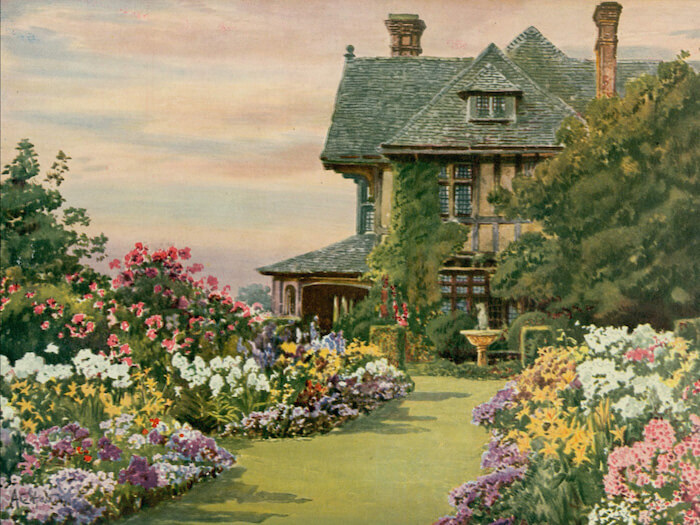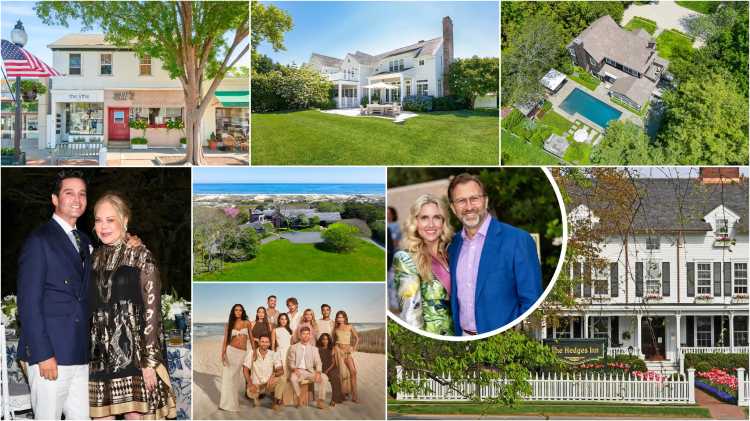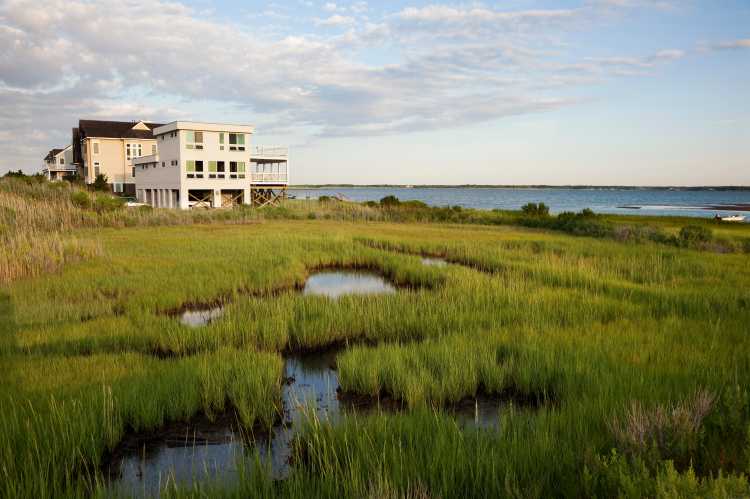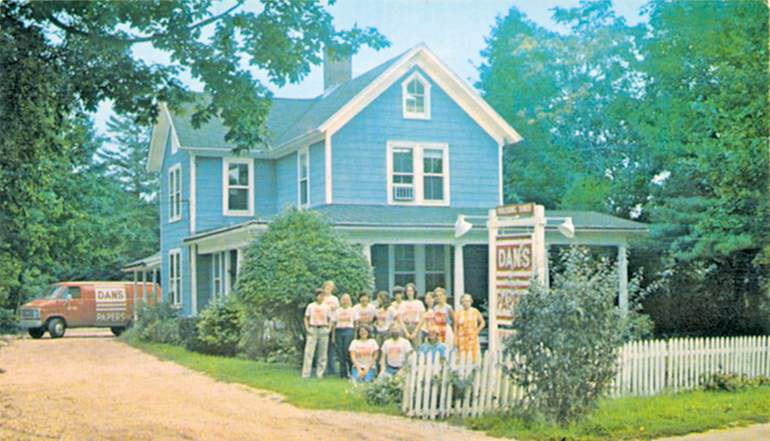Vanderbilt. Hearst. Astor. Names that conjure images of a kind of wealth and opulence that could have only existed in another era. The time period they defined, or that defined them, derived its own name from the satirical The Gilded Age: A Tale of Today, and today the era offers a powerful point of reflection on a time of vast social and economic change. But it is also remembered for the magnificent homes that rose along with fortunes and those famous, sometimes infamous, family legacies. Many have been destroyed over time, yet in the heart of a local architect whose passion for the past and embrace of that most “today” of technologies, they remain more vibrant than ever.
“Mansions of the Gilded Age” social media accounts, which are thriving on various platforms, aim to transport the viewer to another time with an array of historic mansions on display. The project, helmed by Stony Brook architect Gary Lawrance, all started back in 2007 when he was doing publicity for his book Houses of the Hamptons 1880-1930 with co-author Anne Surchin.
It began with a Facebook page. “Little by little, I discovered and joined Facebook groups about old houses and mansions,” Lawrance recalls. After a while he decided to create a group of his own, which “focused only on the estates and mansions built during the Gilded Age, the time of great wealth and opulent living from 1870 to 1930.
“It all ended right after the stock market crash of 1929,” Lawrance continues. “In the beginning of the Gilded Age, families such as Vanderbilt, Whitney, Astor and Frick could claim to be worth over $100 million, which would be billions today.”
Magnificent estates and mansions went up all over the country, including here on the East End and along Long Island’s Gold Coast on the North Shore. With a large archive of material, it “was easy to post new information about these mansions, most of it never seen before by social media audiences,” says Lawrance. The Facebook group started with a few hundred members and today has more than 100,000.
The Instagram account followed a few years later. “At first, I was concerned that being so busy on Facebook, I wouldn’t have time. However, it required less time sharing the same information, since Instagram is more about images with smaller captions.” There are now some 83,000 followers.
“Since I can remember, I have always wanted to be an architect,” says Lawrance. In the early 1960s, he says, “All my LEGO creations were of mansions and castles, never spaceships.” He became very good at the craft, creating LEGO mansions of the Lyndhurst in Tarrytown that took over half of his parent’s two-car garage.
Lawrance’s interest in the houses of the Gilded Age era started at a young age, making it easy to populate the social media realm (in addition to the @mansionsofthegildedage Instagram, he also manages
@thegildedagesociety, @gildedagebooks and @garylawrancearchitect) with new information. “I have a large book collection, news clippings, photos and postcards of mansions from Long Island’s Gold Coast, Newport, Rhode Island, Fifth Avenue, New York City, and many other areas throughout the country.
“I have always felt how nice it was to share my lifelong interest with others who did not know all about the era and the opulent mansions that were built,” he says.

What are some of Lawrance’s favorite mansions on Long Island? “Part of me likes those huge, rambling houses that are seen in the book and many of them are gone,” he answers. “The best part of writing the book was finding all the wonderful mansions that once stood along the ocean and were either damaged and taken down during the 1938 hurricane, or those that have burned or been demolished for new houses.”
In the Hamptons, he names Wooldon Manor as a favorite. The home was a Tudor style, 60-room mansion that once stood on the corner of Gin Lane and Lake Agawam in Southampton. It was demolished in the 1940s. He also favors Villa Millie Fiori, a towering stucco Italian Villa on Coopers Neck Lane in Southampton that was demolished in the 1960s. And there is also Four Fountains, which once stood on Halsey Neck Lane in Southampton and was demolished last year.
Among the North Shore Gold Coast mansions, reminiscent of all their former Gatsby grandeur, he’s a fan of “the restored Otto Kahn mansion at Cold Spring Harbor, known as Oheka. It is currently used as a wedding and events venue and has amazing gardens which have been restored.”
He also notes Inisfada, a 75-room brick Tudor mansion that stood in North Hills until 2013. It “was so big that its towers rose into the sky almost five stories high. Another, which is hardly known at all since it was destroyed in the 1950s, was the beautiful Shoremond estate on Centre Island,” he says.
However, Lawrance’s overall favorite was the Harbor Hill French Chateau at Roslyn, designed by legendary architect Stanford White. “The house sat on the highest hill of Long Island and you could see the Atlantic Ocean and the New York City skyline,” he says. “With almost 100 rooms, it was the scene of many fabulous parties, including one in honor of the Prince of Wales in the 1920s, where over 1,000 of the North Shore elite attended. I am so in love with Harbor Hill, which was demolished in the late 1940s, that I recreated it as a 3D computer model.”
After graduating from New York Institute of Technology in 1982, Lawrance went to work for the Spector Group architects and worked on the many modern office buildings in which the group was involved. “Most new architectural graduates also did models, which I especially enjoyed,” he says.
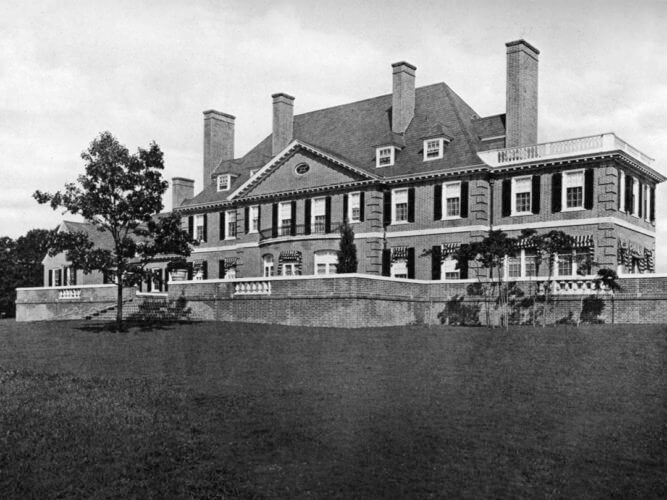
In the early 1990s, he started his own business. It was around that time that larger classic shingle-style homes became popular on the East End. “Through recommendations and mailings, I started getting calls to build paper models,” he says. Word spread that this unique art was Lawrance’s specialty, and clients came to include Francis Fleetwood, Peter Cook, Frank Greenwald, John Laffey, Katherine McCoy, Peabody & Schulz, Preston Phillips and John David Rose.
In 2011, an exhibit of Lawrance’s models was displayed at the Southampton History Museum, and he currently continues to build what he calls “classic paper models” as well as 3D computer models and renderings, through his company, Gary Lawrance Architect. He believes that both perform different aspects. “Nothing really takes the place of a model that you can put on a table and look at from all angles.”
Gary Lawrance will be giving a webinar on the Houses and Gardens of the Hamptons in the Gilded Age on July 28. On July 22 he will host a webinar on the Long Island Gold Coast Estates and discuss Harbor Hill, The Shoremond estate, Oheka and others. The webinars are through the New York Adventure Club. Visit nyadventureclub.com.

